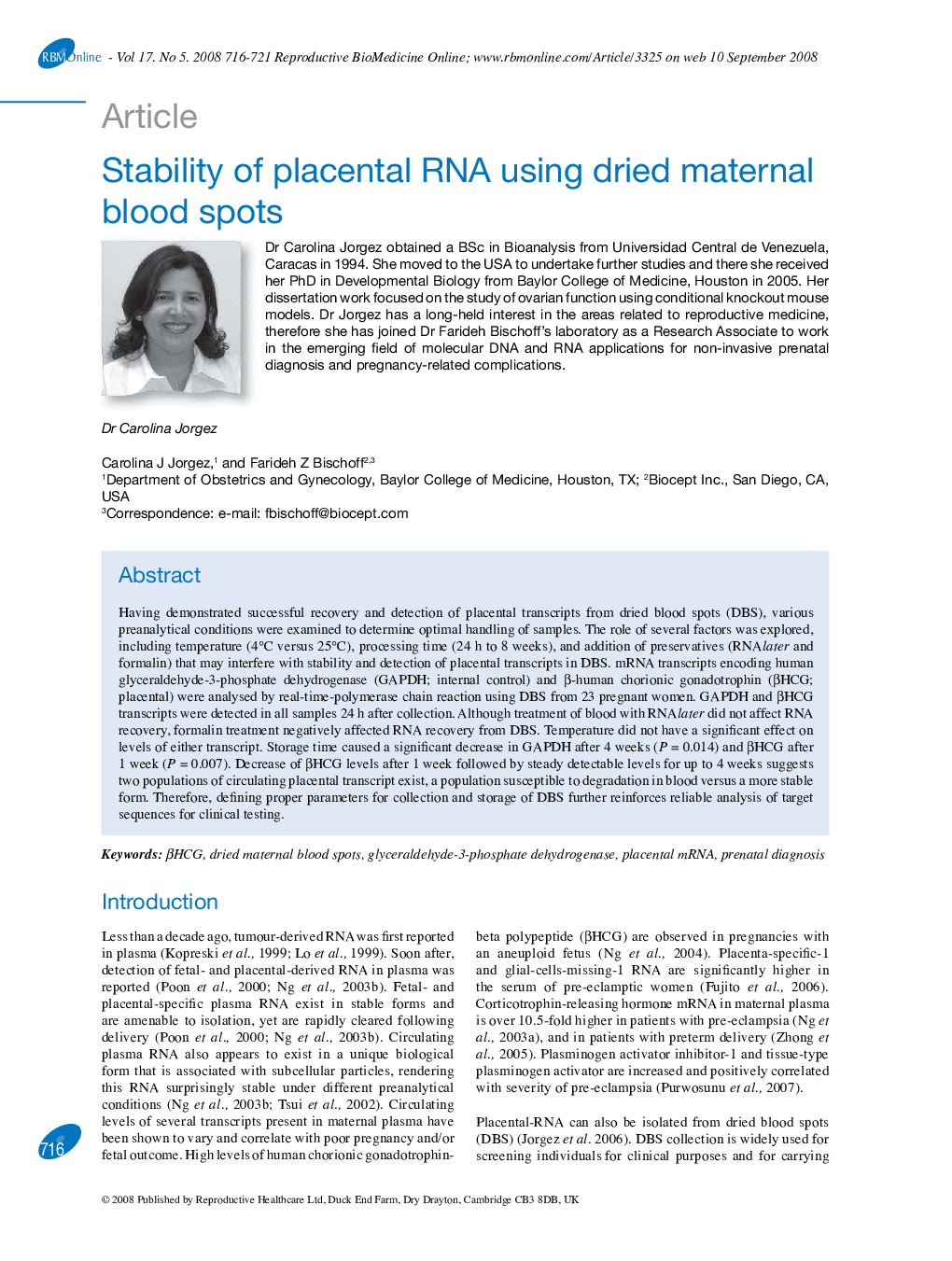| Article ID | Journal | Published Year | Pages | File Type |
|---|---|---|---|---|
| 3972360 | Reproductive BioMedicine Online | 2008 | 6 Pages |
Having demonstrated successful recovery and detection of placental transcripts from dried blood spots (DBS), various preanalytical conditions were examined to determine optimal handling of samples. The role of several factors was explored, including temperature (4°C versus 25°C), processing time (24 h to 8 weeks), and addition of preservatives (RNAlater and formalin) that may interfere with stability and detection of placental transcripts in DBS. mRNA transcripts encoding human glyceraldehyde-3-phosphate dehydrogenase (GAPDH; internal control) and β-human chorionic gonadotrophin (βHCG; placental) were analysed by real-time-polymerase chain reaction using DBS from 23 pregnant women. GAPDH and βHCG transcripts were detected in all samples 24 h after collection. Although treatment of blood with RNAlater did not affect RNA recovery, formalin treatment negatively affected RNA recovery from DBS. Temperature did not have a significant effect on levels of either transcript. Storage time caused a significant decrease in GAPDH after 4 weeks (P = 0.014) and βHCG after 1 week (P = 0.007). Decrease of βHCG levels after 1 week followed by steady detectable levels for up to 4 weeks suggests two populations of circulating placental transcript exist, a population susceptible to degradation in blood versus a more stable form. Therefore, defining proper parameters for collection and storage of DBS further reinforces reliable analysis of target sequences for clinical testing.
